Here’s the new trailer for Battleship, in case you haven’t seen it. The film opens May 18th, in time for Memorial Day Weekend (May 26th-28th).
Posted on March 16th, 2012 at 10:38am.
Here’s the new trailer for Battleship, in case you haven’t seen it. The film opens May 18th, in time for Memorial Day Weekend (May 26th-28th).
Posted on March 16th, 2012 at 10:38am.
By Joe Bendel. The multiplex kids probably have never seen Alfred Hitchcock’s Rope (let alone Alexander Sokurov’s Russian Ark), so the supposed single continuous “real-time” tracking shot making up the latest indyish-genre outing from Open Water directors Chris Kentis and Laura Lau might seem like a fresh gimmick to them. Remaking the recent Uruguayan horror movie (including the aforementioned uninterrupted take), they show fewer seams than Hitchcock but more distracting narrative issues come to the fore in their remake, Silent House, which opens this Friday in New York.
Sarah’s family had some good times in their lake house, but vandals and weather damage have taken a toll. Her father and Uncle Peter are trying to restore it, but their bickering makes the going slow. It looks peaceful outside, but with the windows boarded up and the power kaput, the house is pitch dark inside, even during high noon. It would be a scary place to be locked in with a psycho killer, which will be the case for Sarah. After she establishes the lack of phone lines and cell service with an old childhood chum she cannot remember, her menacing begins.
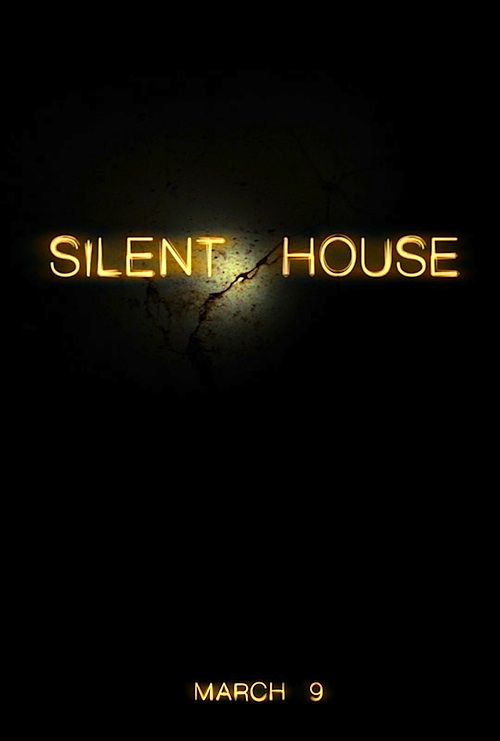 When it comes to the mechanics of skulking about the old dark house, Silent is more than competent. However, when it drops its clues, they clang like anvils. Frankly, anyone who isn’t on to the big twist by the half hour mark must be remarkably guileless, even if they have not seen the Uruguayan original. Unfortunately, this makes it devilishly difficult to buy into Silent as a funhouse ride. Instead, viewers will more likely feel as if they are watching the film play out the string.
When it comes to the mechanics of skulking about the old dark house, Silent is more than competent. However, when it drops its clues, they clang like anvils. Frankly, anyone who isn’t on to the big twist by the half hour mark must be remarkably guileless, even if they have not seen the Uruguayan original. Unfortunately, this makes it devilishly difficult to buy into Silent as a funhouse ride. Instead, viewers will more likely feel as if they are watching the film play out the string.
Still the toast of the indie circuit for her work in Martha Marcy May Marlene, Elizabeth Olsen handles her scream queen duties rather capably. There is actually more to Sarah than the typical teens chased through slasher movies, which Olsen evokes quite convincingly. However, Adam Trese and Eric Sheffer Stevens are just glaringly miscast as Papa John and Uncle Peter respectively, looking more like aging hipsters on a photo shoot for Restoration Hardware than adults with any kind of connection to the real world.
Ironically, the one take device is the least distracting aspect of the film. Indeed, the filmmakers should avoid the game of poker, because they display all kinds of “tells.” As a result, the creepy vibe and some nice work from Olsen, duly framed to maximize viewer leering, largely go to waste. For the curious, Silent House opens today nationwide.
LFM GRADE: D
Posted on March 9th, 2012 at 8:41am.
By Joe Bendel. Eliezer Shkolnik might not look like a national treasure. According to his colleagues, the standoffish Talmudic scholar has a rather thin resume of accomplishments. Yet Shkolnik is about to learn that he will be awarded the Israel Prize, the country’s highest honor for scholarship. However, the circumstances surrounding his belated recognition are rather complicated in Joseph Cedar’s Oscar nominated Footnote, which opens this Friday in New York.
As Footnote commences, the senior Shkolnik must squirm in ill-concealed discomfort as his son Uriel receives another honor long denied to him. Eliezer Shkolnik is openly contemptuous of his son’s trendy work. He might regard it as rubbish, but Uriel Shkolnik publishes an awful lot of it. The same cannot be said of the father, whose life’s project was undermined by archaeological discoveries and the manipulations of a bitter academic rival. Every year, the elder Shkolnik is nominated for the Israel Prize – but to no avail, until now.
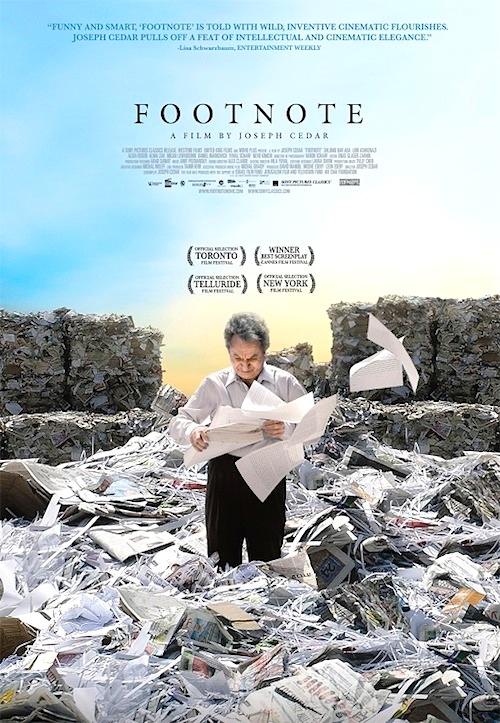 Unfortunately, Uriel Shkolnik has an awkward truth dumped on him by the Prize committee, including his father’s lifelong nemesis. That call was meant for him, not his father. Convinced the public humiliation would destroy what is left of his father’s psyche, the younger Shkolnik desperately negotiates to maintain the honors list as is, just as his father begins to vent his opinions about Uriel’s brand of scholarship in the media.
Unfortunately, Uriel Shkolnik has an awkward truth dumped on him by the Prize committee, including his father’s lifelong nemesis. That call was meant for him, not his father. Convinced the public humiliation would destroy what is left of his father’s psyche, the younger Shkolnik desperately negotiates to maintain the honors list as is, just as his father begins to vent his opinions about Uriel’s brand of scholarship in the media.
Though there is no violence on-screen, Cedar’s razor-sharp screenplay draws real blood. All the pettiness and jealousy of academia is on full display throughout Footnote, while the father-son contentions take on the dimensions of classical tragedy. Indeed, their research might only be of interest to a rarified circle of scholars, but they fight over it like a strategic hill on a blood-soaked battlefield.
Lior Ashkenazi (an Israeli Film Academy Award winner, whose credits include Israel’s first slasher film, Rabies) convincingly portrays the conflicted son, while Shlomo Bar Aba is maddeningly but effectively inscrutable as the reserved and rather squirrely father. Yet Israeli theater director Micah Lewesohn really makes it all crackle and spark as the senior (and eventually junior) Shkolnik’s foil, the Moriarty-like Prof. Yehuda Grossman.
Visually, Footnote is surprisingly dynamic, especially given the esoteric concerns of its characters. Cedar employs montages, sly captions, and rapid edits for shrewd comedic effect, in ways that support rather than overwhelm the central drama. Indeed, cinematographer Yaron Scharf and editor Einat Glaser-Zarhin were clearly key collaborators in stylishly rendering Footnote’s sophisticated look and acerbic vibe.
Part of a very strong field of foreign language Oscar nominees this year, Footnote was a worthy contender. Ironically, despite facing criticism from Islamist hardliners, the state media has trumpeted Asghar Farhadi’s Academy Award for A Separation as an Iranian triumph over Israel, cheapening his moment on the world stage as a result. In fact, while in no way a political film per se, the constant security checks Cedar’s characters go through serve as a grim reminder of the homicidal hatred average Israelis must defy just by going about their everyday lives. Intelligently written and executed, Footnote is highly recommended when it opens this Friday (3/9) in New York at the Angelika Film Center.
LFM GRADE: A
Posted on March 6th, 2012 at 4:31pm.
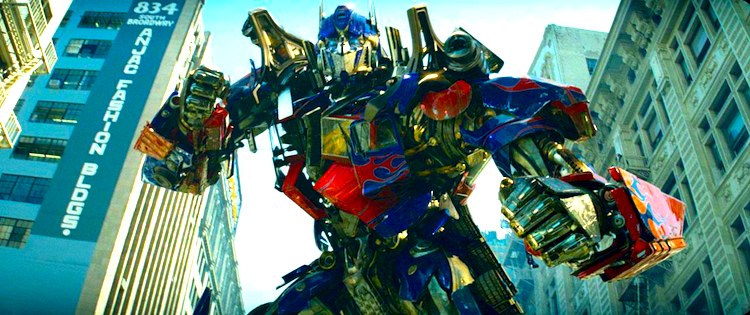
[Editor’s Note: The post below appears today on the front page of The Huffington Post and AOL-Moviefone.]
By Jason Apuzzo. Celebrities will invade Los Angeles this weekend for the 84th Academy Awards ceremony. Searchlights will blaze and flashbulbs will pop as Hollywood stars will descend from the heavens — or maybe just the Malibu hills — to touch the ground that regular Angelenos walk on each day.
They’ll smile and snarl our traffic. They’ll toss their hair and forget to thank their husbands. They’ll praise each other for their bravery, while collecting $75,000 gift bags.
L.A. is accustomed to such strange invasions, of course. If you’re a movie fan, you already know that L.A. has been invaded over the years by everything from giant atomic ants (Them), to buff cyborgs (The Terminator), to rampaging 3D zombies (Resident Evil: Afterlife). So Angelenos take invasions from movie stars in stride.
But this weekend marks an anniversary of an invasion you might not know about: L.A.’s first alien invasion.
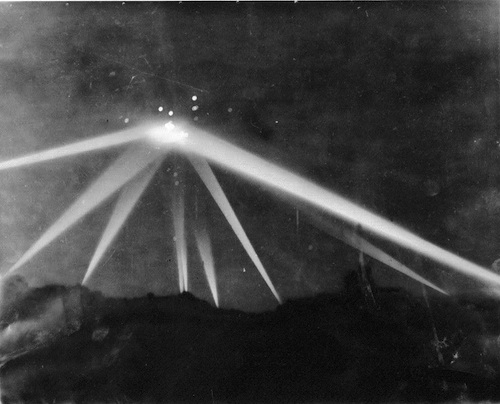
This February 24th-25th is the 70th anniversary of The Battle of Los Angeles, also known as The Great Los Angeles Air Raid, one of the most mysterious incidents of World War II — and also one of the key, oddball events in U.F.O. lore that’s still inspiring movies and TV shows to this day.
Between the late evening of February 24th, 1942 and the early morning hours of February 25th, the City of Angels flew into a panic as what were initially believed to be Japanese enemy aircraft were spotted over the city. This suspected Japanese raid — coming soon after the Pearl Harbor bombing, and just one day after a confirmed Japanese submarine attack off the Santa Barbara coast — touched off a massive barrage of anti-aircraft fire, with some 1400 shells shot into the skies over Los Angeles during the frantic evening.
Oddly, however, the anti-aircraft shells hit nothing. Despite the intense barrage, no aircraft wreckage was ever recovered.
Indeed, once the smoke had cleared and Angelenos calmed down (the public hysteria over the raid was mercilessly satirized by Steven Spielberg in 1941), no one really knew what had been seen in the sky or on radar. Were they weather balloons? German Zeppelins? Trick kites designed by Orson Welles?
Many people believed the aircraft they’d seen were extraterrestrial – one eyewitness even described an object he’d seen as looking like an enormous flying ‘lozenge’ – and some accused the government of a cover-up. Conflicting accounts of the incident from the Navy and War Departments didn’t help clarify matters.
As if to confirm public fears of extraterrestrial attack, one famous photograph emerged (see above) from the incident showing an ominous, saucer-like object hovering over the city. This much-debated photograph, which even appeared in some trailers for Battle: Los Angeles last year, inspired America’s first major U.F.O. controversy — a full five years before Roswell.
To this day, no one knows for sure what flew over Los Angeles that night and evaded the city’s air defenses. (The raid itself is recreated each year at Fort MacArthur in San Pedro.) But since it’s more fun to assume that it was aliens than weather balloons, we’ve decided to honor The Battle of Los Angeles by ranking the Top 10 movies in which aliens attack L.A. (See below.)
To make this list, a film must feature aliens on the warpath — no cuddly E.T.’s here — and their attacks must take place in L.A. proper, rather than out in the suburbs or desert (eliminating films like Invasion of the Body Snatchers).
As the list demonstrates, no city — other than perhaps Tokyo — has suffered more on-screen calamity at the hands of extraterrestrials than Los Angeles. At the same time, there’s no apparently no other city that’s easier for aliens to hide in.
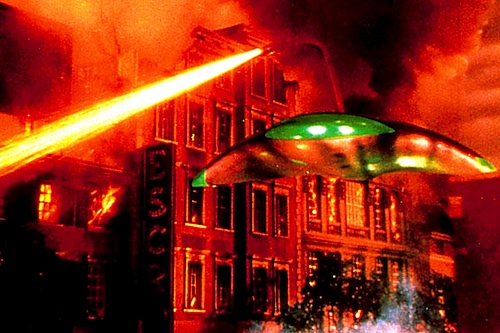
1) The War of the Worlds (1953)
Producer George Pal’s adaptation of the H.G. Wells’ novel is the granddaddy of ’em all, and still the best L.A.-based film about alien attack. Gene Barry plays Dr. Clayton Forrester, a natty scientist at ‘Pacific Tech,’ who along with his girlfriend Sylvia van Buren (a perky USC coed, played by Ann Robinson) struggles to prevent Martian invaders from destroying human civilization. Highlights of the film include a boffo attack on downtown L.A. (which Pal initially wanted to film in 3D) by the graceful, swan-like Martian ships, and an Air Force flying wing dropping a nuclear bomb on the Martians. Filmed in vivid Technicolor, The War of the Worlds was a huge hit, broke new ground in visual effects technology, and helped kick off the 1950s sci-fi craze.
Best exchange of the film: “What do we say to them [the aliens]?” “Welcome to California.”
2) Independence Day (1996)
Director Roland Emmerich’s funny, exhilarating and patriotic summer hit from 1996 borrows key elements from The War of the Worlds, but adds a few of its own: 15-mile-wide flying saucers, a president who flies fighter jets … and Will Smith. In the role that made him a megastar, Smith plays a trash-talking Marine fighter pilot paired with an MIT-trained computer wiz (played by Jeff Goldblum, channeling Gene Barry) who fights an alien saucer armada out to demolish humanity. ID4 is easily the best of Emmerich’s apocalyptic films, largely due to its tongue-in-cheek humor. Watch as ditzy Angelenos atop the Library Tower cheerfully greet an alien saucer, only to be zapped into oblivion a moment later. Only in L.A.
Best line of the film: “Welcome to Earth.”
3) Transformers (2007)
There’s mayhem, and then there’s Bayhem. Michael Bay’s Transformers redefined sci-fi action cinema in 2007, featuring a spectacular climax in downtown Los Angeles — a riot of colossal urban warfare and aerial strikes as the U.S. military and Autobot robots unite to fight Decepticon robots out to enslave Earth. A key sequence showcased Autobots and Decepticons ‘transforming’ at 80 mph on a busy L.A. freeway, swatting aside cars and buses while fighting each other — living out the fantasy of every aggressive L.A. driver. Unlike the stately saucers of ID4, or the graceful war machines of War of the Worlds, Bay’s Decepticon robots are fast-moving, anthropomorphic and nasty. Like certain Hollywood celebrities, they trash talk, strut and propagandize as they smash through buildings and otherwise inflict as much collateral damage as possible. The film that made stars out of Shia LaBeouf and Megan Fox, Transformers delivers heaping doses of humor, curvy women and robot carnage; it’s Bayhem at its best.
Best line: “You didn’t think that the United States military might need to know that you’re keeping a hostile alien robot frozen in the basement?!”
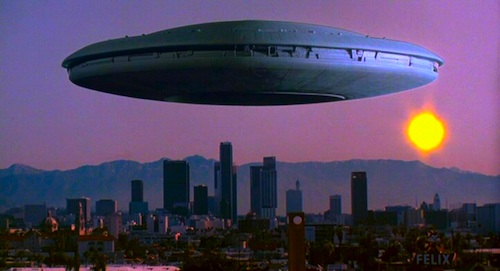
4) V (1983)
These alien ‘Visitors’ look just like us, and they come in peace … except that underneath their false skins they’re actually lizards and want to eat us. That’s the premise of Kenneth Johnson’s apocalyptic NBC miniseries from 1983, a show that leans heavily on references to Nazism, communism and other pernicious forms of group-behavior. V is also the show that first gave us gigantic motherships hovering over major cities, years before ID4. The best part of V, however, is the scene-chewing performance by Jane Badler as the alien leader Diana; somebody should put that woman in charge of GM. Otherwise, in V the human resistance movement against the aliens centers around Los Angeles — possibly because it’s hard to cop a tan while saucers are blocking the sun.
Best line [about the alien leader Diana]: “That damn dragon lady can bend people’s minds around. What the hell does she need a blowtorch for?!” Continue reading LFM’s Jason Apuzzo at The Huffington Post and AOL-Moviefone: The Oscars, The Battle of Los Angeles & The Top 10 Movies in Which Aliens Attack L.A.
By Joe Bendel. The freedom of Australia depends on a handful of teenagers. Fortunately, they are mostly quite good looking. That means they have even more to lose and will therefore be fiercer fighters. A rag tag band of students duly unleash their inner Wolverines in Stuart Beattie’s Tomorrow When the War Began, which opens this Friday in select cities and streams on demand via Freestyle Digital Media’s Facebook platform.
The time is twenty-for hours from now. The place is coastal New South Wales. It is a nice area to grow up and raise a family. At least it was until a foreign military invaded. Ellie Linton and her friends do not know that yet. They have been camping out in a remote mountain clearing misnamed “Hell.” When they return, cell service is out, the land lines are down, and their families are nowhere to be found.
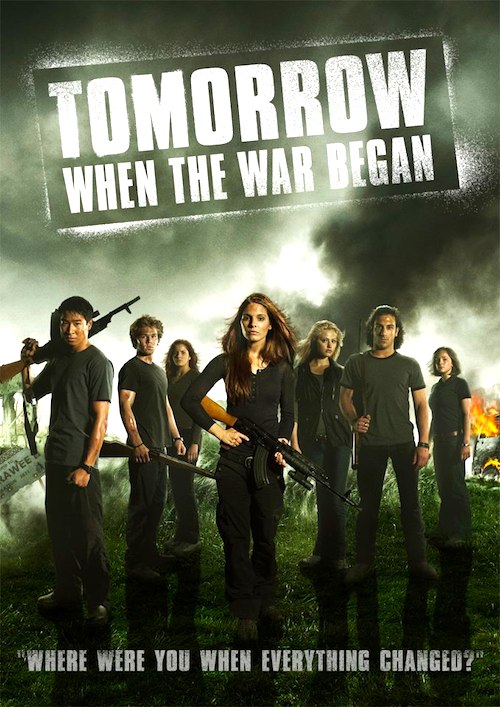 Eventually, they discover the town’s fairground has been turned into a detention center by a vaguely Asian looking army. After a few narrow escapes and a considerable amount of bickering, they decide it is time to take the fight to their invaders – and that strategically positioned bridge looks like a good place to start.
Eventually, they discover the town’s fairground has been turned into a detention center by a vaguely Asian looking army. After a few narrow escapes and a considerable amount of bickering, they decide it is time to take the fight to their invaders – and that strategically positioned bridge looks like a good place to start.
Based on John Marsden’s bestselling Tomorrow series of YA novels, TWTWB obviously owes a debt to the original old school Red Dawn, but that’s okay. Considering how cool the classic Dawn remains, it is downright bizarre that it has not been emulated more often. Frankly, Beattie somewhat tarries in the first act, establishing full well and good just which teens like whom (Linton has a thing for the Lee Takkan, while the well heeled Fiona Maxwell fancies Homer Yannos, the slightly delinquent son of Greek immigrants).
Still, he juggles a lot of teen angst relatively nimbly. His adaptation also treats evangelical character Robyn Mathers with respect, even when presenting her reverence for life as a source of friction with her less conflicted friends. (Why not just throw some St. Thomas Aquinas books at her? Or better yet, throw them at the enemy.)
On one hand, the conspicuous effort taken to not identify the nationality of the invaders is somewhat problematic (one would think that would be valuable intel to suss out). Based on their rhetoric about natural resources and establishing stability in the Pacific region, China sounds like an obvious suspect. Yet it allows the film to effectively ratchet up the teens’ mood of what-the-heck-is-going-on bewilderment and perhaps sets the scene for big revelations in films to follow.
As Linton and Takkan, the more-or-less leads, Caitlin Stasey and Chris Pang are reasonably charismatic presences and wholly credible action figures. Phoebe “The Secret Circle” Tonkin is also surprisingly engaging as the Clueless-esque Maxwell, but Deniz Akdeniz’s Yannos seems to be looking for a Welcome Back Kotter reboot much of the time.
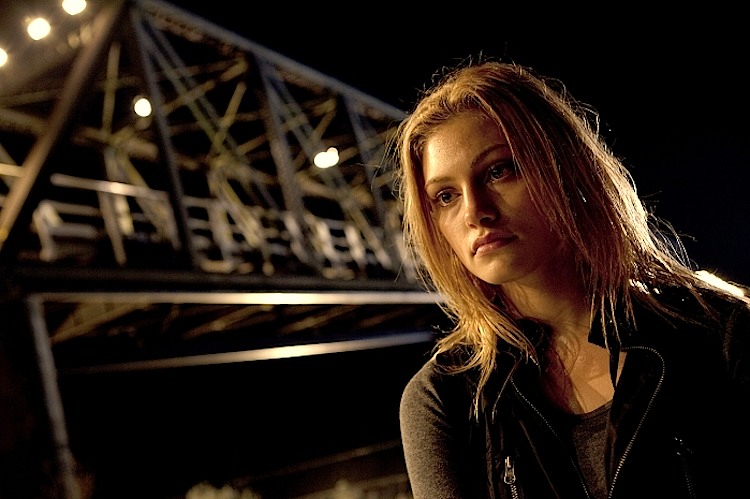
Once Linton and her comrades get organized and down to business, the film starts cooking nicely. It certainly sets up viewers, leaving us wanting more. Since TWTWB ranks as Australia’s highest grossing domestically produced release of 2010, more is indeed reportedly on the way. That is rather welcome news. TWTWB is certainly fun and professional grade popcorn fare that also seriously addresses themes of freedom, responsibility, and sacrifice. It is exactly the sort of film that could make a mint for Hollywood, but apparently they are content to leave such money on the table.
As is customary for most imports, TWTWB will only open in select cities this Friday (2/24) including the Criterion 7 in New Haven and the Palace 18 in Miami, but it will also be accessible to audiences nationwide, through Freestyle’s digital distribution on Facebook. Recommended as a non-taxing teen action picture with a good message and the promise of even better installments down the road, TWTWB is definitely worth checking out from the comfort of your own laptop.
Posted on February 21st, 2012 at 12:27pm.
By Joe Bendel. The love for fantastical little people is pretty universal. Perhaps that is why Mary Norton award winning British YA novel The Borrowers transferred rather easily to Koganei, a Tokyo suburb that happens to be home to legendary animator Hayao Miyazaki’s Studio Ghibli. Following several well-received live action adaptations from the likes of Hallmark Hall of Fame and the BBC, Studio Ghibli produced an anime treatment helmed by their youngest feature director to-date and co-written by Miyazki himself. Set to become Disney’s most widely distributed Ghibli release on a reported 1,200 screens, Hiromasa Yonebayashi’s The Secret World of Arrietty opens today nationwide.
The so-called Borrowers are tiny but proportional people who live in the cracks and crevices of country homes. They survive by “borrowing” supplies that will not be missed from the human household, like a sugar cube. Up until now, the borrowing has been the sole responsibility of Arrietty’s quietly protective father Pod, but having reached a certain age, it is time for her to learn how to survive as a borrower. As her high strung mother Homily anxiously awaits, she and her father venture into the big house. However, their foray leads to disaster when a recent arrival spies them.
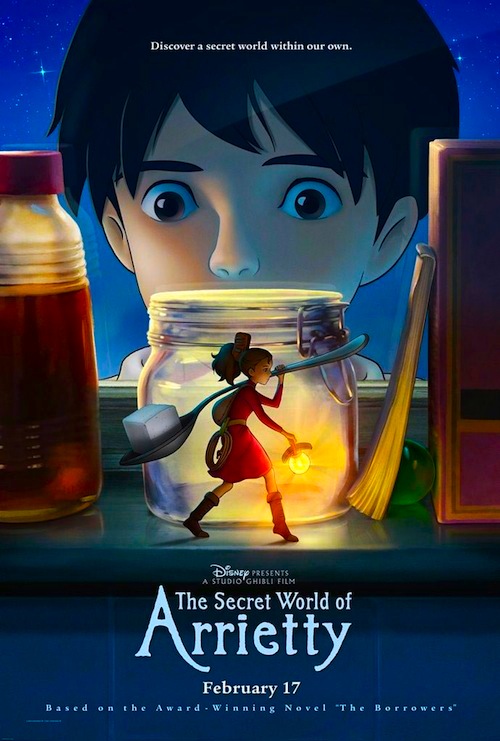 Shō is a sickly human boy, trundled off to the secluded cottage to rest up for an upcoming operation. He instantly recognizes the borrowers from the family legends of the little people living under the floor boards. Even though the scale is problematic, he is also pretty psyched to talk to a girl. Unfortunately, Arrietty’s father is adamant: once borrowers have been seen, they must move on post-haste. Frankly, his concern is not misplaced. Though Shō means them no harm, Haru, the maid of the house, also suspects their presence and intends to treat them like any conventional infestation.
Shō is a sickly human boy, trundled off to the secluded cottage to rest up for an upcoming operation. He instantly recognizes the borrowers from the family legends of the little people living under the floor boards. Even though the scale is problematic, he is also pretty psyched to talk to a girl. Unfortunately, Arrietty’s father is adamant: once borrowers have been seen, they must move on post-haste. Frankly, his concern is not misplaced. Though Shō means them no harm, Haru, the maid of the house, also suspects their presence and intends to treat them like any conventional infestation.
Aside from some CGI here and there, the mostly hand drawn Secret looks richly detailed and lushly evocative. Indeed, the verdant garden is particular suited to the Ghibli magic. The film has plenty of style, but beyond Ghibli’s considerable circle of admirers, it will largely skew towards younger viewers. Still, it is rather watchable for adults so inclined.Indeed, Arrietty is much more agreeably plucky than cloying. Likewise, Shō might be a bit of a sad sack, but at least he is not an energy drain on the film. Even the original songs by French pop-star Cécile Corbel are surprisingly graceful and distinctive.
The only real drawback is the American dubbing, including an over-the-top Carol Burnett as Haru, the bland Will Arnett as Pod, and several tweeners adults will not recognize. Somehow they just do not sound right. (In contrast, the British release features the voice talent of Mark Strong, Olivia Colman, and Saoirse Ronan, which certainly looks more interesting on paper.)
Secret looks great and parents can feel safe and confident taking their children. Although Haru’s maniacal streak seems a bit excessive (from a credibility standpoint), the overall film is quite gentle and charming. A solid B+ outing from Studio Ghibili, Secret opens today (2/17) in New York at Regal Union Square and AMC 34th Street and in San Francisco at the AMC Van Ness.
Posted on February 17th, 2012 at 9:52am.